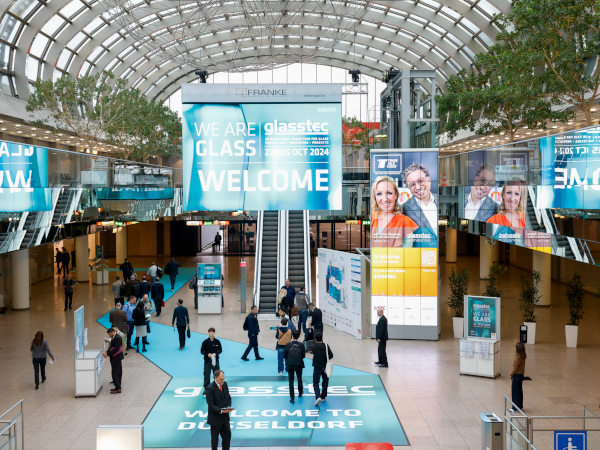Date: 29 September 2004
During this period, AISA has been a reference company for the main glass producers in the world, with which it has established strong and continuous partnership relations.
New products
In its constant pursuit of new markets, the company has always been able to exploit its long expertise to develop products that might meet the customers needs even when prototypical or custom-made equipment were necessary. This applies to the automotive field for which completely automated solutions are usually requested and to the architectural and household appliance domains, in which glass size does matter and a wide range of machinery is required to cover all types of demand. On this subject, AISA has recently developed a series of new machines that are expressly designed for each of the above fields. For the household appliance sector (which now requires increasingly more screen printing operations compared to the past), the new series of printers GHS70, on show at Glasstec 2004, has been introduced. It has already aroused interest on the part of experts due its state-of-the-art technology and innovative solutions, which allow it to achieve top performances with a very compact and user-friendly piece of equipment. The series, which includes automatic and semi-automatic machines, is designed to screen print on sheets measuring up to 1200x800 mm or 800x700 mm. It shares the same quality and features as AISAs machinery for the automotive sector notably very high accuracy, printing repeatability and very short cycle time besides being particularly cost-effective. In addition to oven covers, cooktops and refrigerator shelves, other applications for this series, especially engineered for very thin glass, are PDP (Plasma Display Panel) and LCD (Liquid Crystal Display) processing. Screen printing on this type of glass requires short cycle time and very high accuracy, to be attained on sheets covering a wide size spectrum and with thickness reaching even less than one millimetre. The high throughput for this type of glass often calls for completely automatic screen printing machines and very high printing speed, all of which have been AISA machinerys features since long.
Another piece of equipment that will be exhibited at Glasstec 2004 is new model of screen printing machine GHS154, which is suitable for large-sized glass measuring up to 2500x1750 mm. It has been designed to meet the customers request for an automatic machine that is able to print on the latest standards of windshields, whose size is becoming increasingly larger, and to provide the architectural glass market with new, highly-technological machinery.
Besides printing machines, AISA has also developed new IR, UV and combined IR+UV drying ovens, which are suitable for both large-sized glass parts and for drying patterns as small as automotive glass logos. Among the guiding principles of the design stage of said machinery were energy conservation, which has become a major matter of interest for glass manufacturers, and cost-effectiveness. These are achieved by optimising the lamp power and quantity/ratio of air inside the ovens, but also by removing cumbersome and expensive cabinets, which have been replaced by small electrical boxes installed onboard the heating and cooling modules.
AISA, which has been developing increasingly more complex projects, has recently extended its production buildings. A new assembling department measuring over 6,000 square metres, mainly devoted to the assembly of big, complete and integrated lines, has been operating for some months. It allows AISA to install large-sized lines for the fine-tuning and the final tests at the user s presence, as well as for carrying out simulations as close as possible to reality.
Global partners
One of the main global challenges for glass producers consists in the need for combining cost reduction with higher quality and better performances. This has led AISA and its partners to share proposals and solutions as to process machines, and to increase co-engineering practises, which are usually profitable for both parties. In addition to this, having reached long-term contracting agreements and chosen the suppliers standard equipment has enabled some glass producers to fulfil the difficult task of cutting down costs and ensuring the quality of their products.







Add new comment